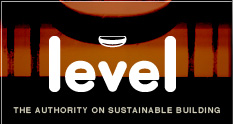Health and Safety
Taking care with materials, equipment and work procedures and dealing with hazards.
Fire safety
Smoke and toxic fumes – not the flames from house fires – generally cause fatalities. Fires from upholstery foam, bedding materials and plastics will smoulder and produce toxic gases but few flames, while fires from burning wood or cooking oil will produce hot, fierce flames.
The design process of a new house or alteration work must include fire safety consideration – there is a house fire in New Zealand on average every 3–4 hours. Smoke alarms are compulsory in all new construction including additions and alterations and all rental properties. Alarms must have a battery life of at least 8 years or be hard-wired. Other options may include:
- installing heat detectors
- specification of a domestic fire sprinkler system
- the selection and specification of materials to lower the potential fire hazard.
Heaters and other appliances
All appliances that burn gas, solid fuel or any other combustible material must be installed to ensure that:
- the combustion process does not raise the temperature of any adjacent building element to a level where its performance is affected
- the accumulation of combustion gases within the building is avoided (see passive ventilation and mechanical ventilation)
- Building Code and standards requirements are met. For example, the Building Code cites AS/NZS 2918:2001 Domestic solid fuel burning appliances – Installation as an Acceptable Solution for the installation of domestic solid fuel burning appliances and flue systems.
You can find more details about wood burners in the BRANZ Bulletin BU654 Installation and maintenance of solid fuel appliances.
Reporting a fire risk
If you want to report a potential fire risk:
- with an electrical or gas product, call Energy Safety (part of WorkSafe New Zealand) on 0508 377 463, or record your comments online here.
- with a non-electrical or non-gas product, contact Trading Standards (part of MBIE) on 0508 627 774
- related to your local area, contact your local council.
Updated: 21 November 2022.


